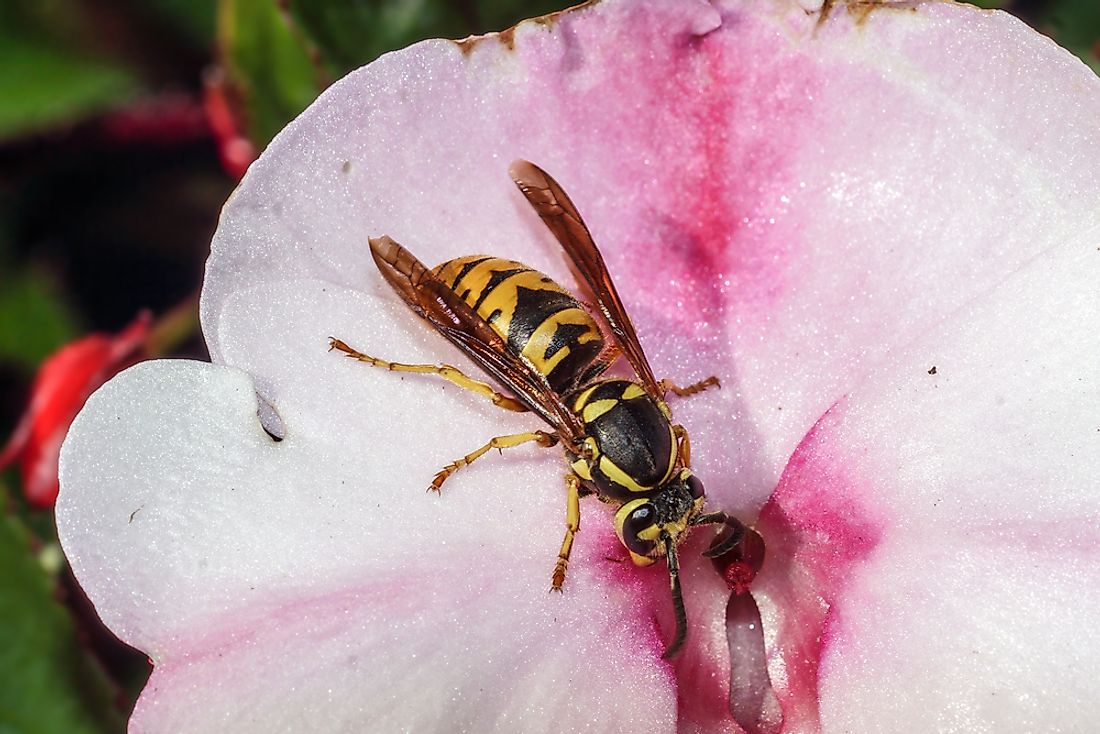What Is A Yellowjacket?

Yellowjacket is the North American name for numerous predatory social wasps of the genera Dolichovespula and Vespula. Yellowjackets are known as "wasps" in other English-speaking nations. Yellowjackets are at time mistaken for bees since they are similar in size and have a sting, but they are wasps. They can also be confused for other wasps like paper wasps and hornets. The female yellowjackets can sting, and they are all predators of pest insects.
Appearance
A yellowjacket queen is about 0.75 inches long while the workers are approximately 0.5 inches long with alternating bands on their abdomens. Yellowjackets can be mistaken for honey bees when seen flying in/outside of their nests. Unlike honey bees, yellowjackets have white or yellow markings, and they do not have tan-brown dense hair on their bodies. They do not have hairy flattened hind legs. Yellowjackets don’t carry pollens.
Majority of these wasps are yellow and black like the Dolichovespula arenaria (aerial yellowjacket) and Vespula maculifrons (eastern yellowjacket), while others are white and black like the Dolichovespula maculate (bald-faced hornet). In some species, the background color of the abdomen is red and not black.
Yellowjackets have a lance-like stinger with a small barb which stings repeatedly, although most of the time the stinger gets stuck and pulled out of their bodies. All yellowjackets have a white or yellow color on their faces. They have strong mandibles for chewing and capturing preys and proboscis for sucking fruit or nectar.
Life Cycle
Yellowjackets are social hunters which live in colonies containing queens, drones, and worker. These colonies are yearly with only fertilized queens overwintering. A fertilized queen can be found in the most protected region like in soil cavities, in stumps, and hollow logs among other places. The queens emerge during early summer or late spring and build a small nest and lay eggs. Once they hatch, the queen feeds them for about twenty days. The larvae pupate come out after some few days as small infertile females known as workers which take care of the larvae. The adult workers appear in mid-summer and help with colony defense, foraging for food, and caring for the queen. The queen spends her entire life laying eggs, and a colony can grow until it reaches a maximum size of over five thousand workers.
Once they have reached a maximum size reproductive cells are built with new queens and males produced. The adult reproductives remain in the parent colony and are fed by the workers until they are ready to mate. The male yellowjackets die immediately after mating while the queen looks for a protected place to overwinter. The workers usually leave the nest to die; so does the parent colony’s queen. The abandoned nest decomposes over winter. The nests can survive if left dry, but they are rarely used when the cycle repeats in the spring.
Diet
The larvae feed of protein from fish, meat, and insects which are collected by the adult yellowjackets. The larvae then secrete some sugary materials for the adults to eat, this type of exchange known as trophallaxis. The diet of adult wasps is composed of items rich in carbohydrates and sugars like tree saps, flower nectars, and fruits.











